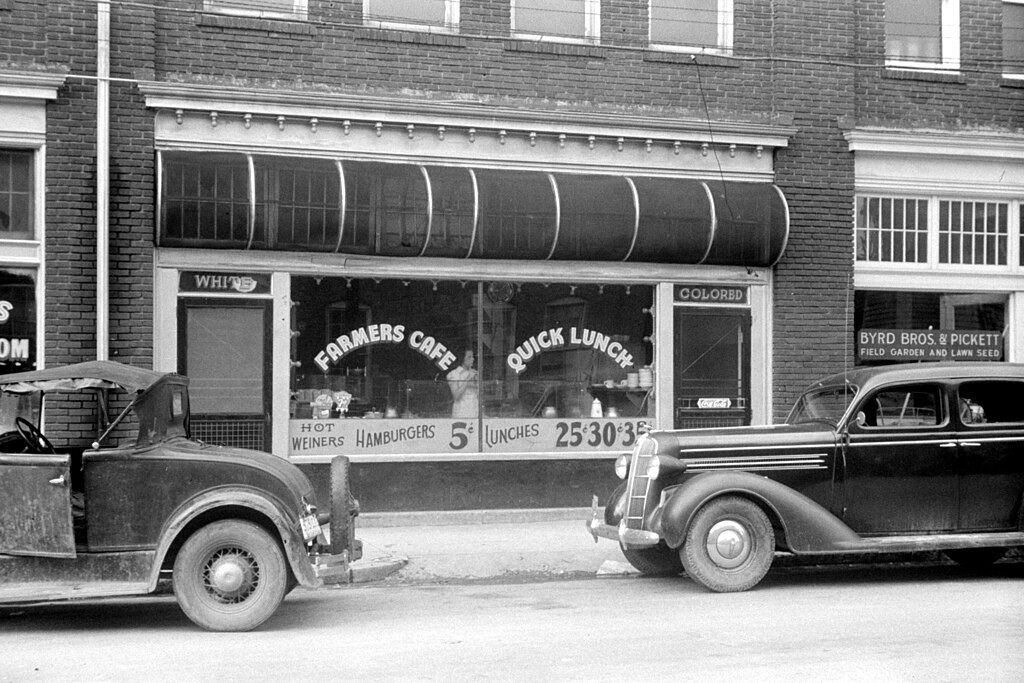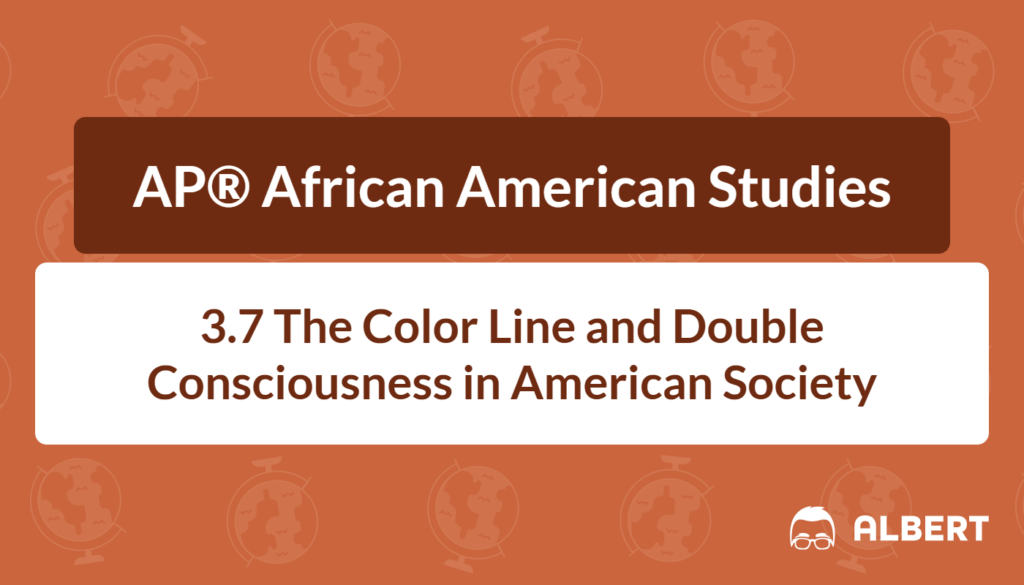What We Review
Understanding the Color Line and Double Consciousness in American Society
Racial discrimination in the United States has often been described through powerful symbols and metaphors. Two of the most significant concepts are the “color line” and “double consciousness.” These ideas highlight the physical and emotional effects of segregation, discrimination, and oppression on African Americans. By studying these concepts, students can better grasp the realities of race in American history and society.
What Is the Color Line?
The color line refers to the unofficial (and often legal) boundary separating Black Americans from white Americans. After the Civil War, the nation passed amendments granting citizenship and voting rights to African Americans. However, prejudice did not disappear. By the late 1800s, the rise of Jim Crow laws reinforced the color line through segregation in schools, businesses, and public spaces.
This line was more than just a set of rules. It became a powerful symbol of division. It created constant barriers to opportunity and equal rights. Therefore, African Americans faced tremendous challenges in everyday life. For instance, under segregation, African Americans could not freely attend the best schools, secure quality jobs, or enjoy social freedoms that white Americans often took for granted. These inequalities reflected the ongoing struggle for full participation in American society.

The Significance of Du Bois’ Statement
W.E.B. Du Bois, a pioneering sociologist and civil rights activist, famously declared that “the problem of the twentieth century is the problem of the color line.” He recognized that racial discrimination—and the divide it caused—would be the greatest challenge facing the United States after slavery had ended.
Du Bois’ words reflected harsh realities. African Americans, deprived of fair education and economic opportunities, were denied the chance to prosper on equal terms. Voting rights, for example, were often limited through unfair practices like literacy tests and poll taxes. Consequently, civic participation became difficult for many Black citizens.
Du Bois believed that illuminating these injustices would inspire change. He challenged Americans to confront the moral and democracy-related costs of segregation, warning that leaving the color line unaddressed would hurt the nation’s collective progress. This perspective fueled activism aimed at challenging social norms and dismantling the harmful structures of racism.
Exploring Double Consciousness
In his book “The Souls of Black Folk,” Du Bois presented the idea of “double consciousness.” This term describes the internal tension felt by African Americans who must evaluate themselves both through their own eyes and the eyes of a society that discriminates against them. As a result, individuals experience two conflicting identities: one that desires full acceptance in mainstream society, and another that is mindful of racial stereotypes and prejudices.
This split can create emotional distress. On one hand, discrimination reminds African Americans that society sees them as outsiders. On the other hand, there is a deep awareness of personal worth and cultural heritage. Therefore, double consciousness can be a daily challenge, but it can also become a source of strength. By understanding both perspectives, individuals often develop resilience and insight that empower them to stand against injustice.
The Mask and the Veil: Symbolic Representations
The Mask
Paul Laurence Dunbar’s poem “We Wear the Mask” (1895) uses the mask as a symbol of how African Americans conceal their true feelings to cope with discrimination. The poem describes the pain hidden behind a polite, agreeable exterior. Instead of openly showing frustration or sadness, African Americans at the time might have felt pressure to appear cheerful to avoid conflict with white society. However, this concealment could be emotionally draining.
The Veil
In “The Souls of Black Folk,” Du Bois presents the concept of “the Veil.” This symbol represents the separation of Black Americans from mainstream white society. It also stands for the limited view white Americans have of Black experiences. From Du Bois’ perspective, African Americans live inside this Veil, aware of life within and beyond it. White Americans, meanwhile, see only one version of reality, lacking a full understanding of African American life.
Comparing the Mask and the Veil
Both symbols capture African Americans’ efforts to balance belonging with self-protection. Dunbar’s mask reflects day-to-day survival strategies, while Du Bois’ Veil underscores broader social divisions. Together, they show the complex ways African Americans navigated a society that often refused to see them as equals.
Effects of Double Consciousness
Double consciousness, born of racism, leads to both struggle and resilience. On one side, it can feel like a constant reminder of being treated as an outsider. This mental burden can trigger feelings of sadness, frustration, or doubt. Yet, it can also inspire agency, adaptation, and resistance.
Many African Americans used their dual perspective to promote social and political change. Understanding how white society viewed them sometimes enabled strategic planning when organizing protests, starting businesses, or educating future generations. Furthermore, double consciousness deepened awareness of injustice, motivating activism. For instance, during the Civil Rights Movement, leaders like Martin Luther King Jr. leveraged this keen insight to connect with diverse audiences. They recognized racial tensions yet presented hopeful visions of a united society. Consequently, double consciousness became a powerful tool that transformed personal insight into collective action.
Conclusion
The color line and double consciousness remain essential concepts for anyone studying African American history. They speak to the heart of racial inequality in the United States, exposing how boundaries—both legal and social—shaped generations of Black Americans. Whether referring to Jim Crow laws or the internal struggle of forming an identity, these ideas emphasize that segregation causes harm to both individual well-being and the nation’s progress.
Understanding these concepts is not just about the past. It helps students and society recognize ongoing racial issues. By learning from history, communities can address the roots of discrimination and work toward more inclusive, equitable solutions. Consequently, grasping the themes of the color line, double consciousness, the mask, and the Veil offers pathways to deeper empathy and meaningful change.
Required Sources
Paul Laurence Dunbar’s “We Wear the Mask” (1895)
Dunbar’s poem emerged in an era when African Americans faced strict segregation and open hostility. It underscores how Black individuals shielded their suffering with smiles and courtesy. This protective veneer was essential for survival in a society unwilling to see their true humanity. Because of these barriers, “We Wear the Mask” still resonates today. It reminds readers of the bravery in maintaining dignity while facing inequality.
W.E.B. Du Bois’ The Souls of Black Folk (1903)
Du Bois published The Souls of Black Folk at a time when Jim Crow laws restricted nearly every aspect of Black life. His essays (including “The Forethought,” “Of Our Spiritual Strivings,” “Of Alexander Crummell,” and “The Afterthought”) expanded on African Americans’ lived experiences after the Civil War. He highlighted “the Veil” as both a real and a figurative divide blocking true equality. Moreover, his idea of double consciousness explained how African Americans balanced these battles internally while seeking advancement.
By writing so openly on these issues, Du Bois ignited new ideas about racial identity and national unity. His work encouraged public dialogue on the hidden costs of segregation, further inspiring future movements for justice. Therefore, these writings remain groundbreaking texts that show the deep impact of discrimination on African American lives at the turn of the twentieth century.
Quick Reference Chart
Below is a quick reference chart defining key terms discussed in this post:
| Term | Definition |
| Color Line | A metaphor for racial discrimination and segregation that persisted in the United States after slavery. |
| Double Consciousness | The internal conflict experienced by African Americans due to oppression and societal pressures. |
| The Mask | From Paul Laurence Dunbar’s poem “We Wear the Mask.” It symbolizes the façade African Americans must present to cope with racism. |
| The Veil | From Du Bois’ “The Souls of Black Folk.” It represents the barrier separating Black life from white society, limiting understanding. |
Sharpen Your Skills for AP® African American Studies
Are you preparing for the AP® African American Studies test? We’ve got you covered! Try our review articles designed to help you confidently tackle real-world AP® African American Studies problems. You’ll find everything you need to succeed, from quick tips to detailed strategies. Start exploring now!
Need help preparing for your AP® African American Studies exam?
Albert has hundreds of AP® African American Studies practice questions, free response, and full-length practice tests to try out.









